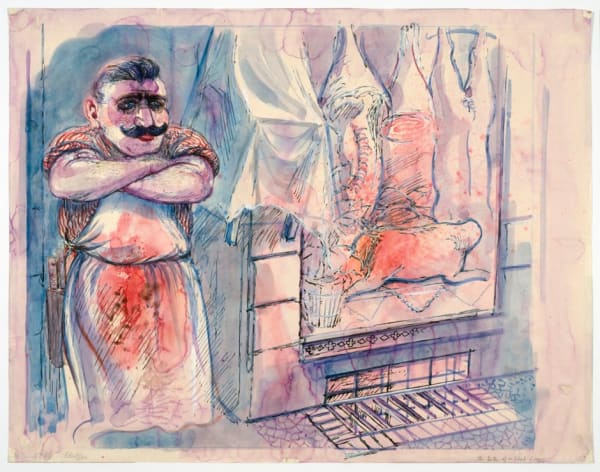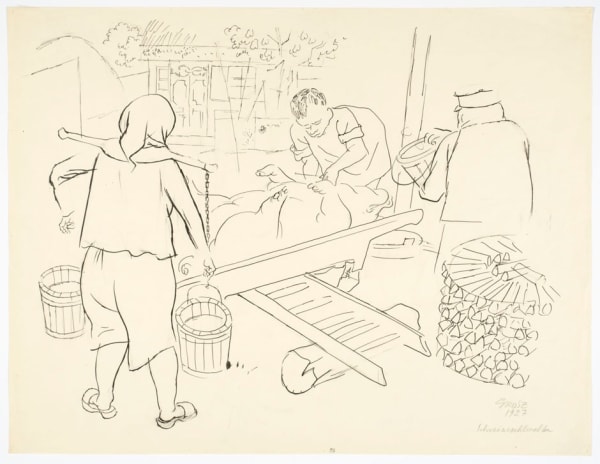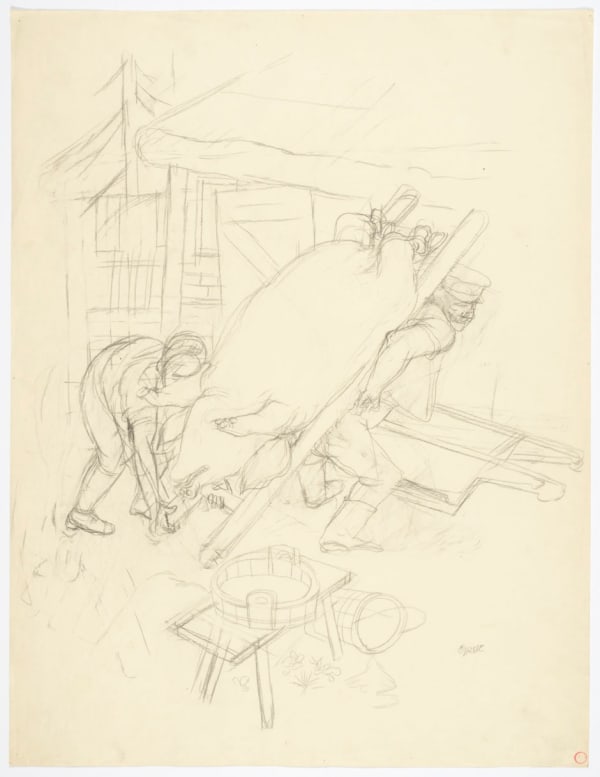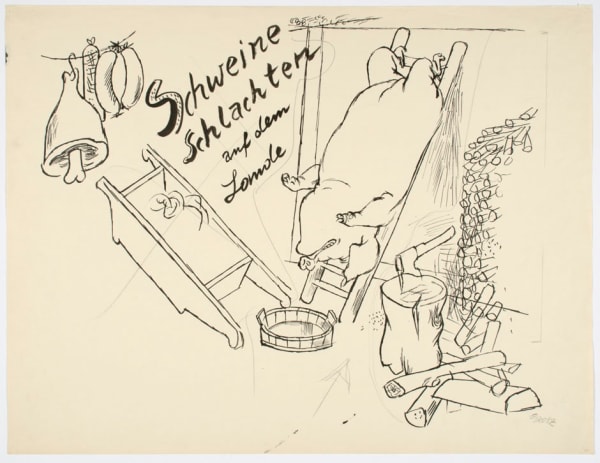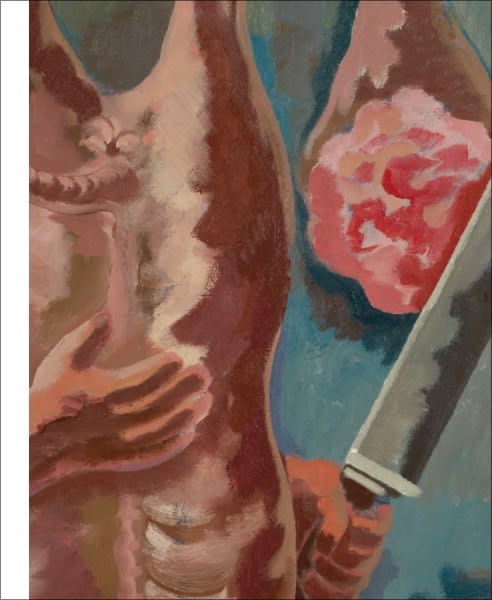-
Overview
David Nolan Gallery is pleased to announce the opening of two exhibitions: George Grosz, The Way of All Flesh, which includes seven works on paper, and a group exhibition entitled Large Drawings, featuring seven works by contemporary artists. The exhibition runs until March 3, 2012.
George Grosz, one of Germany’s most celebrated artists of the early 20th Century, produced a body of work centered on the theme of butcheries during his final years in Berlin, prior to his departure for the United States where he would make his home for 25 years. Perhaps one of the reasons why the subject interested Grosz was the precarious food situation in Germany that began after the first World War and became particularly acute from the mid-1920’s onwards. Germans, famous for their love of meat, was forced to severely ration food supplies; rampant inflation made meat a luxury.
For Grosz and other artists like Otto Dix, the butchery became a metaphor for a brutalized society; instead of providing nourishment, the butcher is portrayed as a harbinger of death. In 1931, Grosz created a series of drawings entitled “Pig Slaughter in the Countryside” that was illustrated in Frankfurter Illustrierte magazine. For those who were able to see these illustrations, the scenes of pig must have been a fever dream. On view will be works from this series as well as others. A catalog published by Galerie Nolan Judin, Berlin, accompanies the exhibition.
-
-
 George GroszFleisher (Butcher), 1928watercolor, reed pen, pen and ink on paper18 1/8 x 23 1/4 in (46 x 59.1 cm)
George GroszFleisher (Butcher), 1928watercolor, reed pen, pen and ink on paper18 1/8 x 23 1/4 in (46 x 59.1 cm) -

-

-

-
 George GroszSchweineschlachten auf dem Lande (Pig Slaughter in the Countryside), 1931ink brush, reed pen and ink on paper18 1/8 x 23 5/8 in (46 x 60 cm)
George GroszSchweineschlachten auf dem Lande (Pig Slaughter in the Countryside), 1931ink brush, reed pen and ink on paper18 1/8 x 23 5/8 in (46 x 60 cm) -
 George GroszSchweineschlachten auf dem Lande (Pig Slaughter in the Countryside), 1931carpenter's pencil on paper23 5/8 x 18 1/4 in (60 x 46.4 cm)
George GroszSchweineschlachten auf dem Lande (Pig Slaughter in the Countryside), 1931carpenter's pencil on paper23 5/8 x 18 1/4 in (60 x 46.4 cm) -

-
-
Publications
-
Artist
GEORGE GROSZ: THE WAY OF ALL FLESH : Works on Paper from 1927-1931 ,
January 27 - March 2, 2012MAILING LIST SIGN-UP
By completing this form, you confirm that you would like to subscribe to DAVID NOLAN’s mailing list and receive information about exhibitions and upcoming events. Your email address will be used exclusively for the mailing list service.
* denotes required fields
We will process the personal data you have supplied to communicate with you in accordance with our Privacy Policy. You can unsubscribe or change your preferences at any time by clicking the link in our emails.

